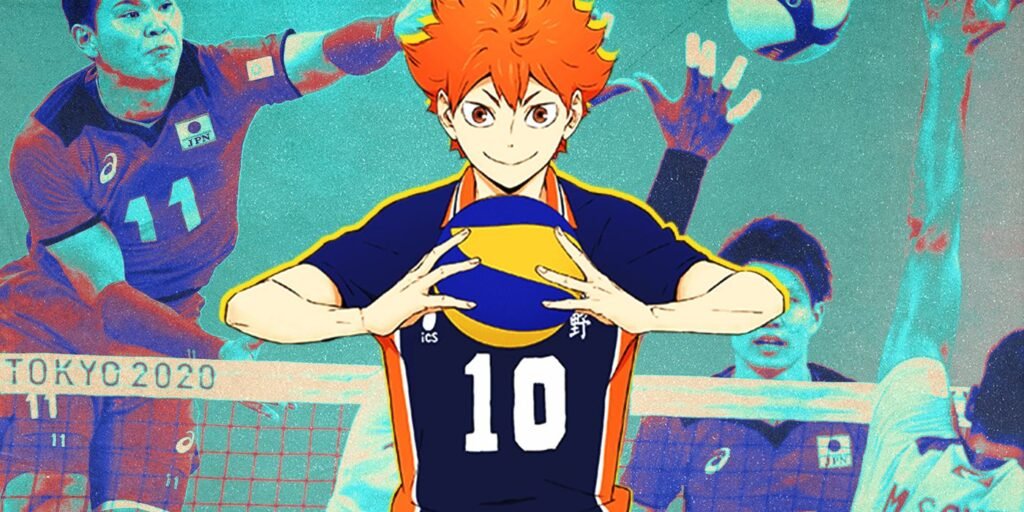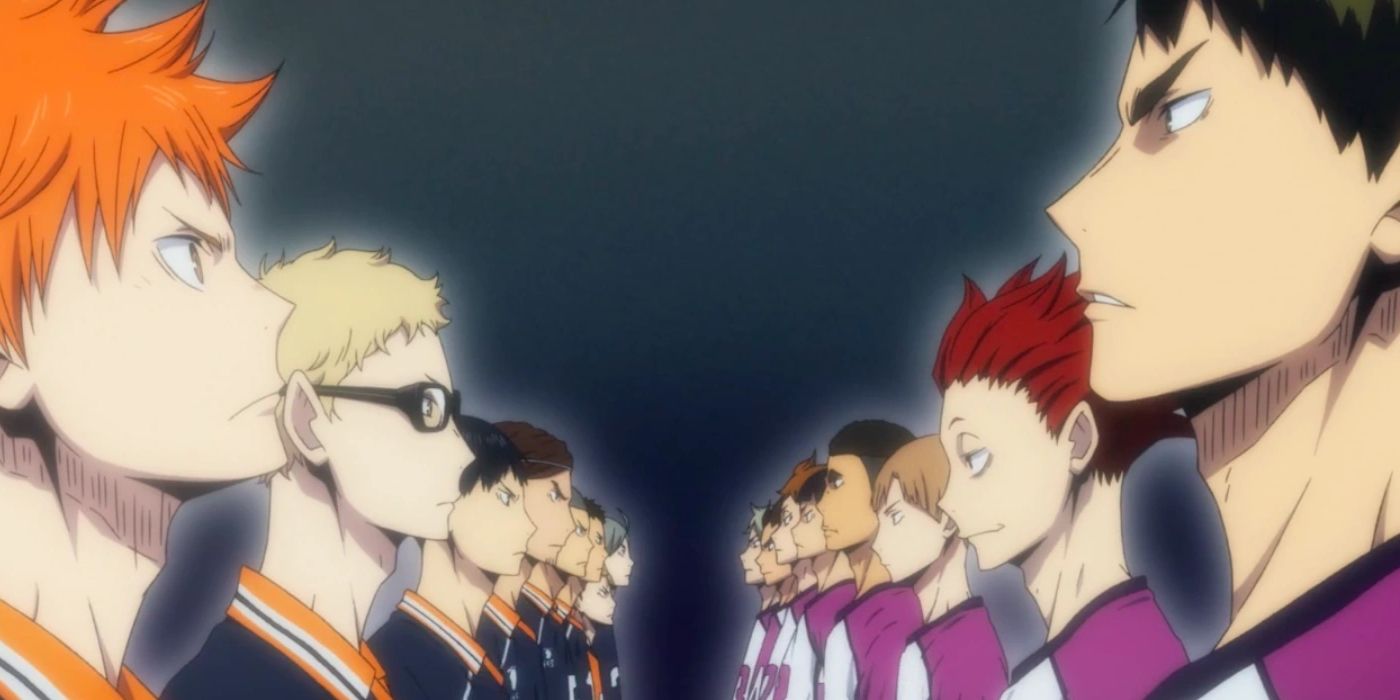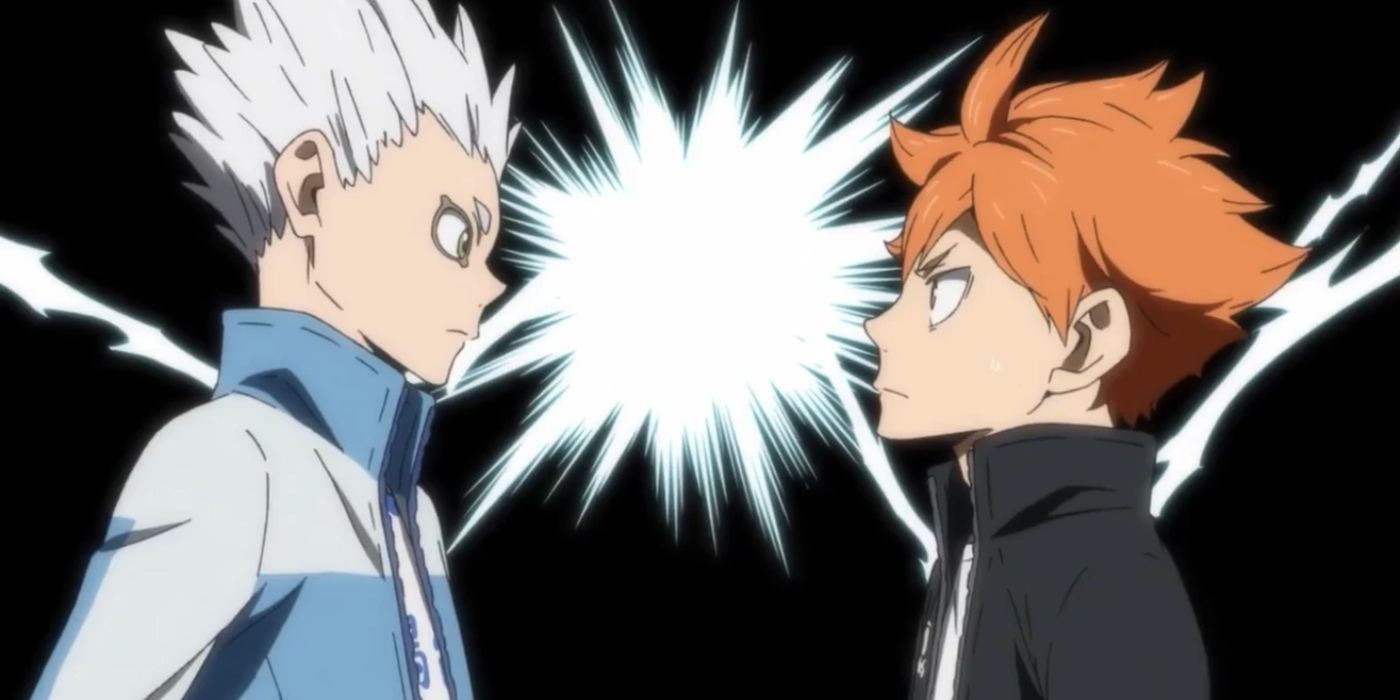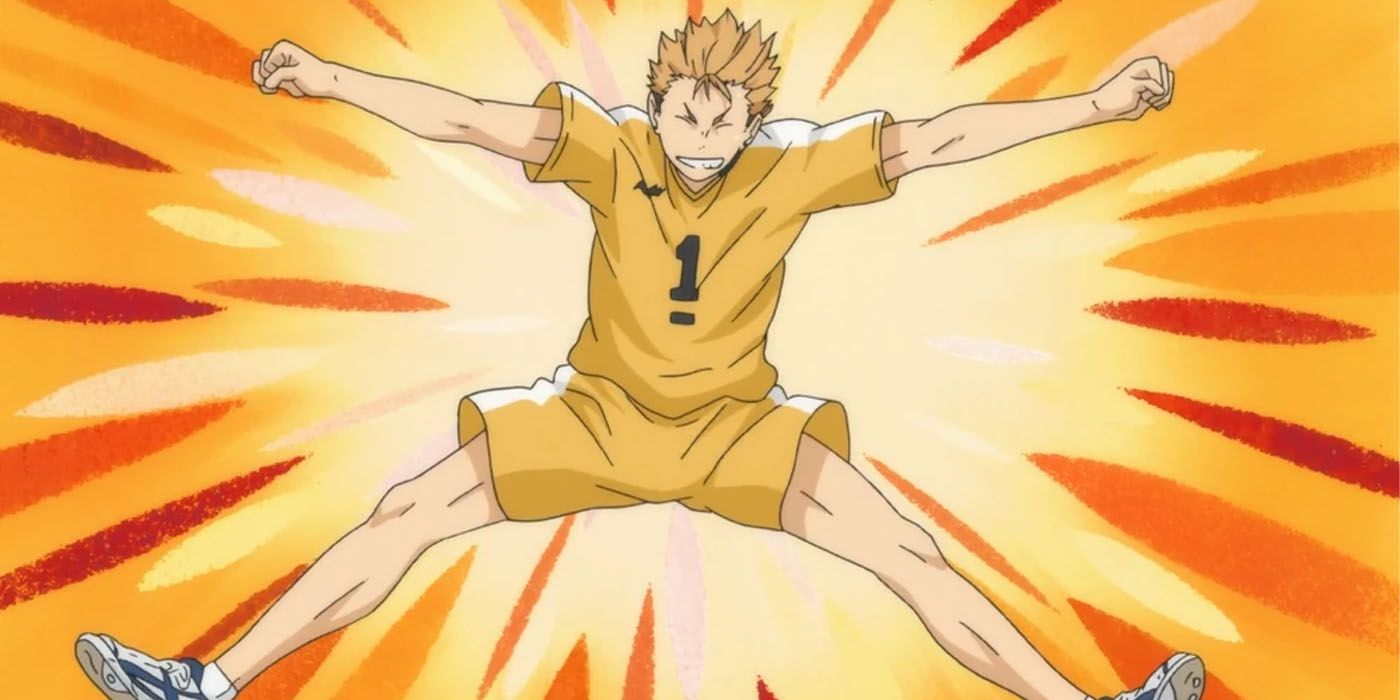Mild Spoilers For Haikyuu!!
When the anime debuted in the Spring of 2014, Haikyuu!! quickly became known as one of the best sports anime. Through its focus on the sport of volleyball, fans grew to know and love the team Karasuno, along with each of its unique team players. The anime sparked the community’s interest in the sport, but the major question is whether this is due to a proper reflection of the sport or an over-dramatization of it.
While all sports anime manage to explain the basic rules of the sport they are representing, they miss details, choose drama over the real experience, and, at times, fail to connect with athletes. This is where Haikyuu!! differs from most sports anime. It shows a deep understanding of the ins and outs of volleyball, from the individual player experience to the lowest moments of being an athlete. There’s so much to the realism of Haikyuu!!, that there’s even commentary from an Olympian. Through a deeper look into the anime, fans can find a whole new appreciation for Haikyuu!! and the standard it set for sports anime to come.
Volleyball’s Rules IRL Versus Haikyuu!!
Fun Facts About Volleyball:
- The sport was invented in 1895 by an American named William G. Morgan. He created his vision for the sport in a Holyoke, Massachusetts YMCA gymnasium.
- Volleyball debuted in the Olympics in 1964 in Tokyo, Japan.
- As of October 11, 2023, the nation with the highest world ranking is Poland.
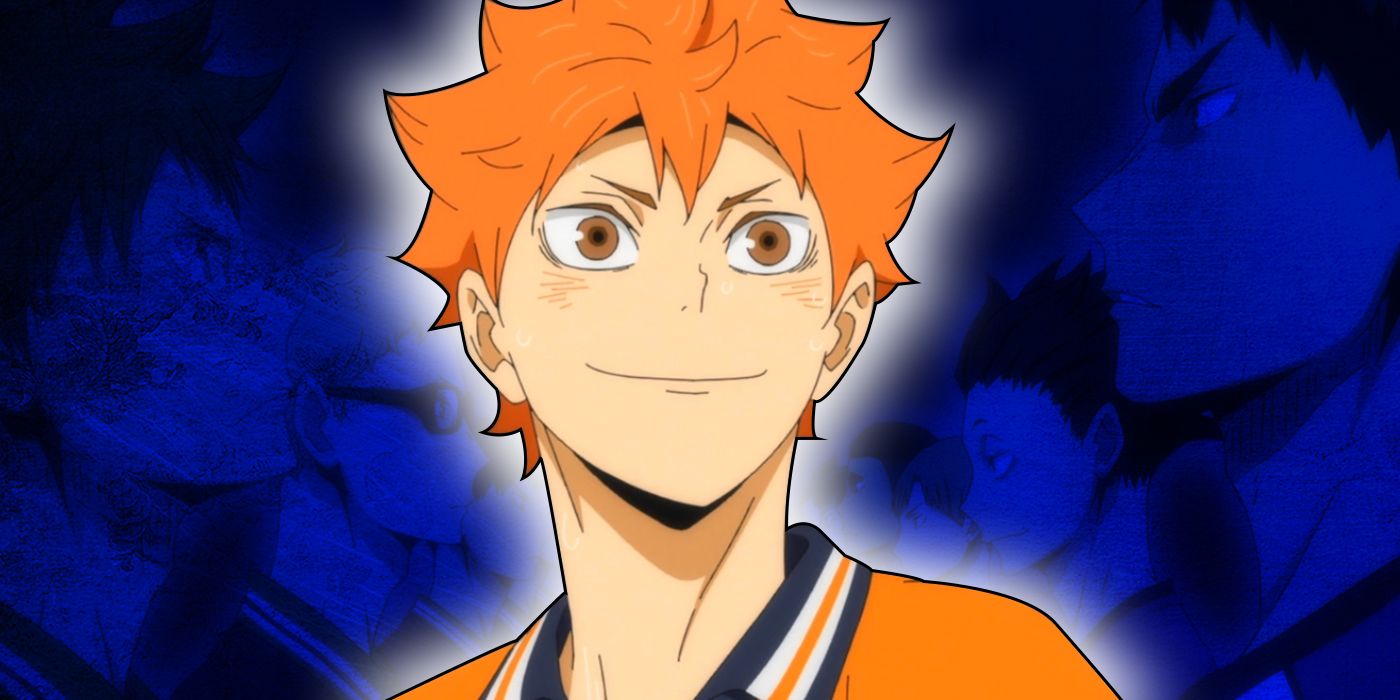
Every Haikyuu!! Arc, Ranked
Haikyuu!! is one of the greatest sports anime of all time, but some of its arcs are stronger than others.
In every season of the anime, the athletes play in matches against different teams. Each team may have their strengths and weaknesses, but the rules of the court remain the same. From court positions to winning points, there is much to follow in each of these matches. The anime certainly displays the drama of a match above a recounting of the rules, but the way these matches pan out isn’t too far from reality.
Setting Up The Game: Team Formation And Positions
Key Jargon:
- Position – the given role of each player
- Location – where the player is on the court
- Substitution – where a player is taken out of the lineup or rotation, and replaced by another player
- Rotation – the rule in volleyball that states that players will rotate in a clockwise fashion when their team sides out
- Rally – when players of both teams hit the ball until a foul is committed or the ball falls to the ground, resulting in a score
- Serve – the first strike of the ball; sent to the opposing team’s side of the court
- Set – a form of legal contact in volleyball in which contact is made over a player’s head with both hands simultaneously, typically performed by setters, or the round within a match
- Side Out – regaining the serve when the opposing team loses a point
According to the rules explained on the Olympics’ official website, the sport of volleyball is played with 6 players on each side of the court. Each athlete is given one position to support their team during a match, though some players, like Italy’s Andrea Gianni, cover multiple roles. These positions are setters, middle blockers, outside hitters, weakside hitters, and liberos. Under these positions, athletes balance out their team. One player — a weakside hitter — may focus more on defense, while another — the setter — will focus on controlling the ball for the sake of offense.
The only set rule for the number of team members is there has to be 6 players for a match. If a player is not chosen to stand on the court at the beginning of a match, they may have their shot later on through a substitution. The website Volleyball Solutions explains that substitutions (also known as “subs”) essentially take out a player from the court and replace them with someone on the bench. This has to happen between points when a given player is in a specific location on the court; there’s even a particular way that the players are switched.
Like most sports, the location of players is an important detail to keep in mind, but volleyball has a special rule that depends on who is serving and who has gained a point. The first rally begins after a coin toss decides which team will serve first.When a team scores a point, they either maintain or gain the serve for the next rally. Once this happens, the scoring team is given a side out, meaning they have the next serve. The players are then required to do a rotation, which is a clockwise movement of their location on the court.
The rotation causes a problem for the team as certain positions require players to be at specific locations — middle blockers should be by the net, outside hitters need to be on the left side of the court, etc. Only after the ball is served over the net can players run to their required positions. In many cases where a certain player is moved to a location that doesn’t suit their position, a substitution can be beneficial.
How Does Haikyuu Represent Team Formation And Positions?
In the anime, the number of players and their positions are reflected perfectly. Everyone is given their role and they have their own moments to shine in those positions. The one detail appears to be the different use of jargon; the Olympics website uses terms like “weakside hitter” where Haikyuu uses “opposite hitter.” This slight change is still part of the vocabulary that volleyball fans use — it just may be different when it comes to Olympic matches.
Rotation and location are to some degree shown but not as focused on because of how fast-paced each round can be. This is different from sitting down at a game and watching every second of a match. These little details may be glossed over in favor of the intense drama of a match, but that isn’t necessarily a bad thing. As far as substitutions, that is the one detail in Haikyuu that isn’t used often. However, the times that it has been used were focused on with care; the anime even shows how players have to gain the referee’s attention and approach one another before substituting.
A Focus On The Ball: How To Score And How To Give Points Away
Key Jargon:
- Spike – the offensive play where a player swings the ball with their palm sharply downwards over the net and into the opposing court.
- Out of bounds – when the ball touches the ground, a boundary line, or any object outside the court.
- Block – when a player jumps over the net and hits the ball that the opposing team’s hitter has just hit, with the goal of deflecting it back to the other side of the court.
- Server – the player who is serving the ball.
- Foul – any move that is considered illegal in the rule book of volleyball; results in a loss of points.
In real life, each volleyball match is a Best of 5 game, meaning that the majority of rounds played with be up to 5 at most. Every set is played with the goal of 25 points — basically, the first to that number wins the set. If there is still a tie after four sets, then the fifth and final set will be up to 15 points instead. Like with the set-up rules of a match, there are intricacies to the rules or scoring in volleyball.
There is a limit to the number of times the ball can be touched on one side — the specific number varies depending on the tournament or match. When spiking or hitting the ball over the net, the ball has to land within the designated lines of the court. If the ball is hit too far and lands beyond the court lines, it is considered out of bounds and that team loses a point. Touching the net when hitting or blocking the ball will result in a point loss. Even the server can cost their team a point if they step over a designated line.
How Does Haikyuu Represent How To Score And How To Give Points Away?
The anime has more of a focus on the action of the matches through rallies and key moments for players. Following the most basic rules of scoring, the scoreboard is shown often, and the explanations of how close to or far from Karasuno is to victory do a good job of keeping the audience up to speed without repeating information. As far as scoring, players like Daichi and Nishinoya, whose positions are more focused on defense, reflect how positions are not a set rule in the sport. Generally, anyone can score a point, and no designated rule states otherwise. This is how matches can be unpredictable.
The anime also doesn’t shy away from reflecting on the mistakes that can be made during a match. In Karasuno’s match against Aoba Josai, the setter Oikawa makes the mistake of serving the ball with too much power and hitting it beyond the court line. There are moments when an action done by a player should have resulted in a foul, but the anime didn’t include it because the action is there for hype and drama. This latter detail is one of many reflections made by a popular volleyball athlete who loves Haikyuu.
An Olympic Athlete Adds His Perspective On The Anime
|
Position Name |
Main Goal* |
Karasuno Player** |
|---|---|---|
|
Setter |
Maintain the team’s offense and set the ball up for spikes. |
|
|
Middle Blocker |
Play offense as well as defense. Block oncoming spikes from the opponent’s court. Attack the balls that are set in the middle of the court. |
|
|
Outside Hitter |
The team’s primary attacker; plays on the left side of the volleyball court. (Also known as the Side Hitters.) |
|
|
Weakside Hitter |
The team’s primary defender against the opposition team’s outside hitter; plays on the right side of the volleyball court. |
(Note: The Haikyuu!! Wiki refers to this position as “Opposite Hitters/Right-side Hitters/Right-Wing Spikers”)
|
|
Libero |
Pass, return the ball, and help the team with defense. Cannot reach over the net to block or attack. |
*Olympic Volleyball Rules; **Haikyuu!! Wiki
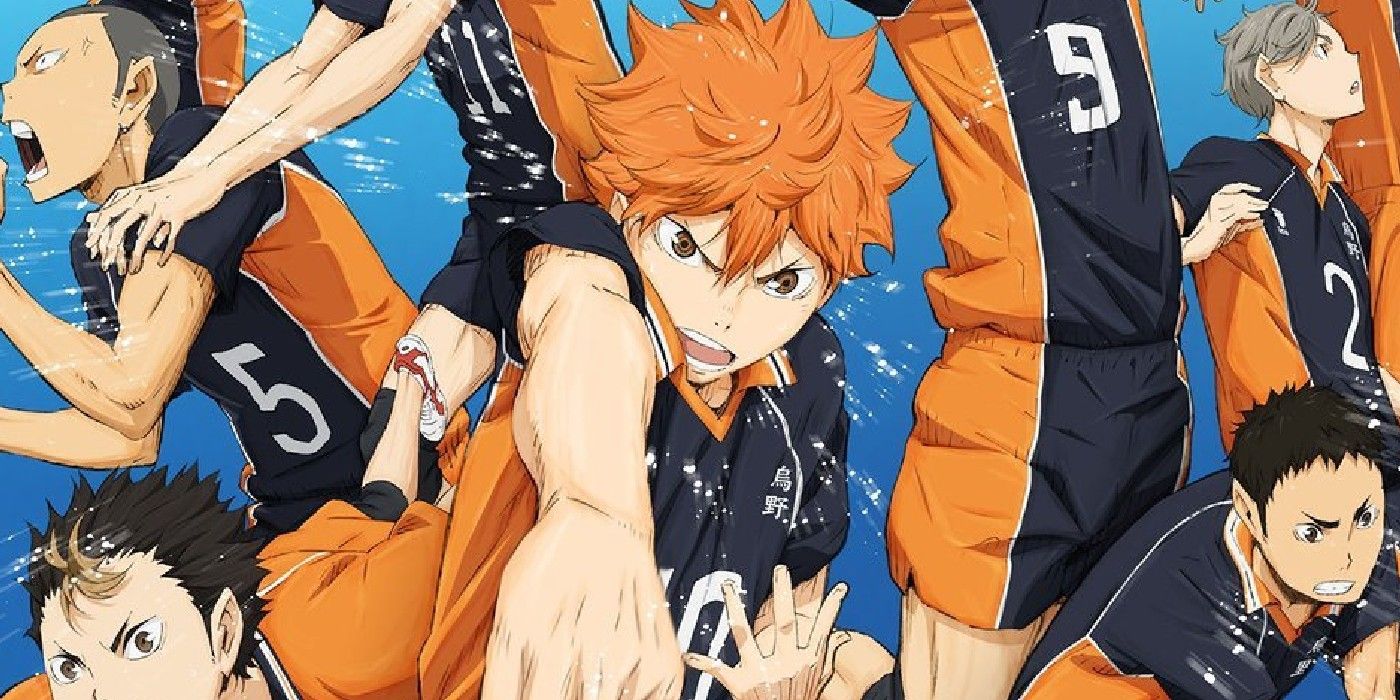
What Makes Haikyuu!! So Endearingly Popular Compared to Other Volleyball Anime & Manga?
Plenty of volleyball anime have been released over the decades, but the mega-popular Haikyuu!! stands out from the pack. Here’s a look into why.
Olympic Volleyball player Erik Shoji did a reaction video with Crunchyroll reflecting on Haikyuu. He also has his own YouTube Channel where he reacts to the anime. In one of the key moments of Shoji’s reaction, he emphasizes that he takes lessons from the anime as an athlete, showing that there is accuracy in this series. He states, “The technique in this anime is very high-quality.”
Thanks to his experience, Shoji discusses the technical accuracy of the anime for viewers. In a spiking scene that emphasizes a fluid animation of the ball, Shoji says “At the professional level, these jump serves are averaging about 70 miles per hour.” In a real game, viewers would never see a slow motion of the ball changing shape nor the intense expressions of the players — unless they’re in the front row — but this reaction is proof that most, if not all, of Haikyuu‘s dramatic animation, is in line with many features of the sport.
Some sports anime may have clutch moments that the creators made up, but Shoji points out one particular Haikyuu moment where the anime is spot on. In the match against Shiratorizawa, Shoji explains that Tsukishima’s well-timed block is precisely what tends to happen in matches. He shares that “the hitter might think that it’s open, but this blocker closes the seam…and roofs him.”
Shoji also includes a couple of critiques of the anime, like the angle on Oikawa’s arm when performing a jump serve. The biggest critique is when Hinata jumps against a wall to hit the ball. He explains that this would typically result in a foul since Hinata doesn’t just make contact with the wall, but uses it as an advantage to hit the ball. Even as he makes this explanation, he doesn’t appear to be upset with the dramatization of the scene, stating it “makes for a great show and is pretty entertaining.”
As a Libero, Shoji especially loves the character Nishinoya, commenting “We’re the guardian gods for the middle blockers.” Even outside of matches, Shoji praises Haikyuu!! for the way it handles the character’s training and shares how intense it is in real life. Adding his insight into the training regimen for Olympic athletes, he shares “we practice serves 30 minutes to an hour every day.”
A Refreshing Approach To Sports Tropes
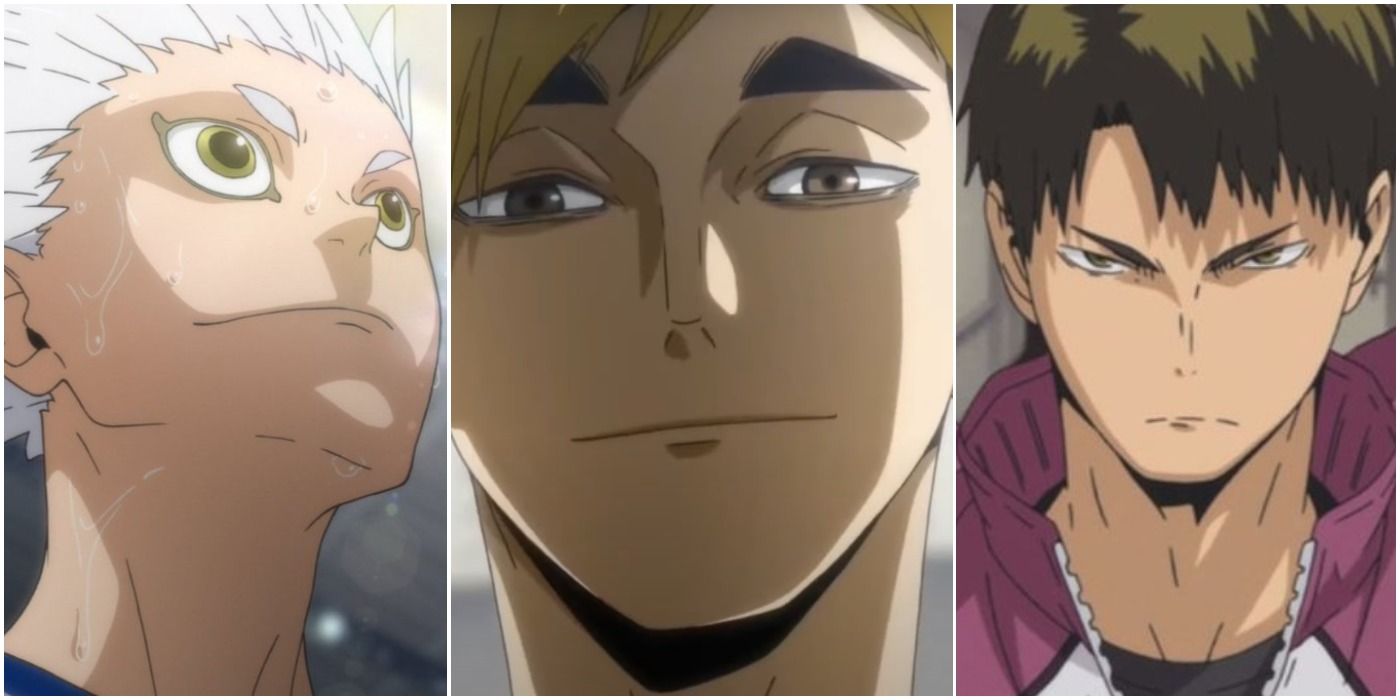
Haikyuu!!: 10 Most Intimidating Teams, Ranked
Haikyuu!! proves that volleyball is multifaceted, and a team can be strong and scary for a number of reasons, from strategy to history to raw power.
As far as following the rules, Haikyuu is accurate enough to impress an Olympic athlete. Going beyond the sport, the anime also does a great job of handling the emotional and storytelling side of volleyball. A problem arises in sports anime when it becomes obvious that the main team will win, but Haikyuu sets a new standard when it comes to approaching the sport and the series’ antagonists.
A Competition of Winners and Losers
The Haikyuu!! anime doesn’t make it obvious that Karasuno will win every game, and they do this in two ways. One is the emphasis that only the best team will make it through. This is first reflected in the 16th episode of season 1, “Winners and Losers,” which gives a special focus on every losing team and how heartbreaking the experience is. Karasuno experiences this feeling of crushing defeat against Aoba Josai later on. The second way that this is done, is through intense character development.
Not only is every player on team Karasuno well-developed and given critical roles at one point or throughout the series, but even the opposing players on other teams are given the same treatment. Scenes where team players train together outside of competition add character development and lay the foundation that outside of tournaments and matches no player is above another. This establishes the idea early on that Karasuno may win the vast majority of their matches not because they are the main characters, but because they earn it.
The Significance of Growth And Teamwork
Since Karasuno and every other team have to be the best to win matches, it makes sense why the anime focuses so much on character development and training. In this series, there is no filler because every moment, whether it be part of a tournament or just part of the character’s high school experience, is an integral part of the full experience. As individuals, each character shines in their roles, making saves and scoring points. But the anime emphasizes that volleyball is a team sport, which serves as more than just a trope.
While “the power of friendship” might not have worked for every sports anime, in Haikyuu!!, working together is integral to winning matches. A major part of why this works is because of the training arcs. These moments show the difference between a team of separately talented individuals and a cohesive team that works together. From the lessons in these training arcs, the team shows that having each other’s back during matches is the best strategy. As far as intense training, Erik Shoji would agree that hours of training are a major part of the sport.
A Realistic Approach
Typically in sports anime, the main team is featured with all their flaws that they must overcome. Their opponents, however, are made to appear unstoppable. Haikyuu doesn’t always do this. The greatest challengers, including Shiratorizawa, are shown to have flaws — some worse than others. Players making mistakes and being punished with fouls by the referee happen often enough and give a degree of realism to the anime.
Sometimes these mistakes or oversights give Karasuno a break, but more often they reflect character and, more importantly, just how difficult this sport is. No one is perfect or godly, and that makes the viewing experience more believable. It truly is more akin to watching a live match between two teams who’ve trained hard and equally want to win.
A Lack of Gimmicks
In addition to Haikyuu!!‘s realistic approach with character flaws, it also leaves out any gimmicks. Certain anime like Eyeshield 21 — which strangely had a lot of gun use during games — spruce up their stories with creative quirks for characters. Haikyuu!! touches upon this creativity through team themes. Karasuno’s schtick is that they are the intense crows who rely on offense, while their rivals, Nekoma, are the agile cats who excel in defense. Shiratorizawa was given a hyperbolic focus on their height and how they towered over Karasuno. These details are used to support creative narrative and dynamics, but they aren’t used so often that they take away from the sport.
Individual characters are also given a small quirk when serving. Each player has their own form when performing a serve, which Erik Shoji explains is part of the real-life sport. Shoji explains, “It’s very, very important for every player to have a routine, especially for serve. It’s the one time in volleyball where you have full control over what you’re doing.” This is used as less of a caricature for individuals and more of a pure reflection of volleyball.
One other mistake that sports anime tends to make is unrealistic pacing. The match suddenly becomes slow in moments where time is supposed to be limited and oftentimes a long-winded monologue accompanies the scene. In Haikyuu!!, the use of slow motion is sparse and limited. Monologues are also incredibly rare and reserved for specific moments when a character is struggling. More often than not, Haikyuu!!‘s volleyball matches are fast-paced.
There is a reason why Haikyuu!! is so popular and much of that has to do with how realistic the series portrays volleyball. The reflection of a vast majority of rules and technicalities is so on-point, but the way the narrative is handled still balances action and drama. The series has created the perfect balance of realistic sport and entertaining escapism that even volleyball athletes are fans of. As Haikyuu!! comes to an end with two final films, fans can relish taking part in such an incredible viewing experience.
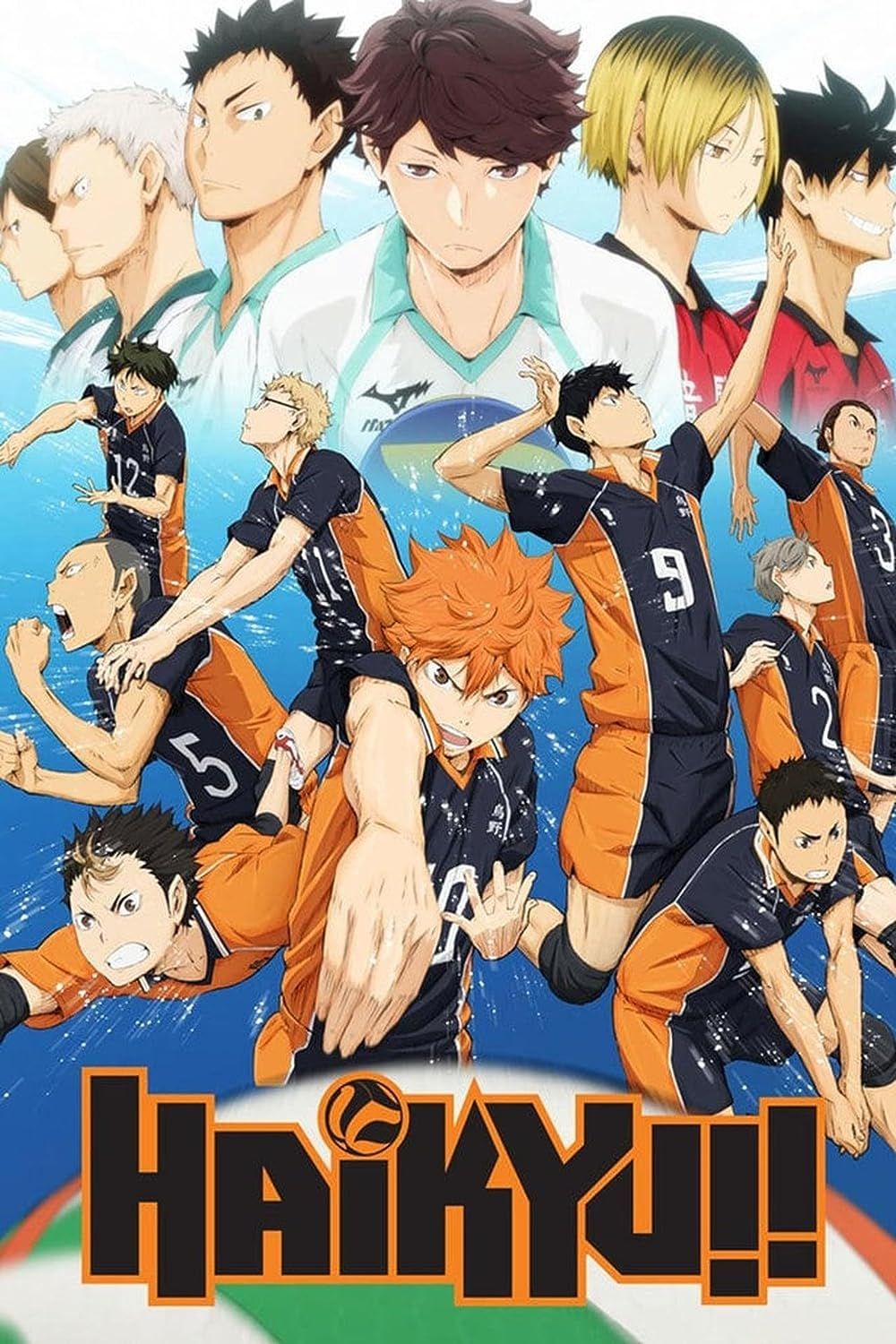
Haikyuu!!
Determined to be like the volleyball championship’s star player nicknamed “the small giant”, Shoyo joins his school’s volleyball club.
- Release Date
- April 5, 2014
- Cast
- Ayumu Murase , Kaito Ishikawa
- Seasons
- 4
- Creator
- Haruichi Furudate
- Production Company
- Mainichi Broadcasting System (MBS), Production I.G.Production I.G.
- Number of Episodes
- 89

